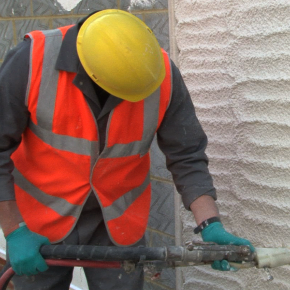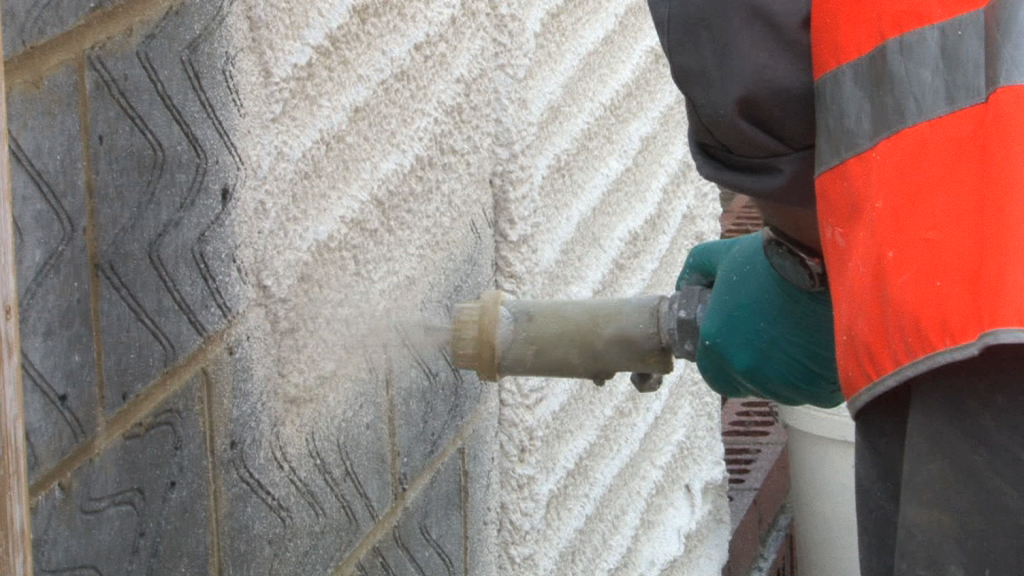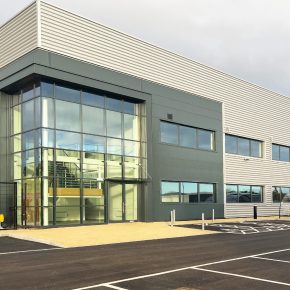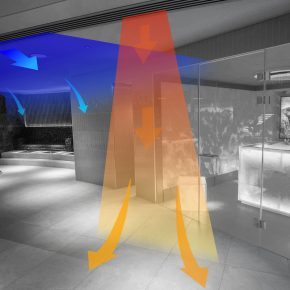
Weber: Rescuing render – prevention is better than cure
Paul Roberts, national technical support manager for UK and Ireland at Saint-Gobain Weber, discusses render in this article…
“When applied correctly, modern renders offer homeowners a low maintenance, durable finish. Features such as one-coat and pump application is designed to cut time on site and integrated biocide help to reduce the natural occurrence of algae on surfaces.
However, if render isn’t applied by a fully trained professional, it can be costly to fix. Remediation costs will depend on the level of work needed, but render isn’t designed to come off, so can damage the substrate when being removed.
However, there are lots of preventative measures that can be taken before it gets to that stage.

Manage movement in the substrate
The most common issue we see is cracking in the render because of movement. These stresses are usually caused by drying or shrinkage of masonry which causes cracks in the façade.
The movement joints must be implemented as in the drawing. The position and number of joints is dependent on the height and length of wall, materials used and openings. This movement control is designed to allow the stress to dissipate into the joint.
Check render thickness
Thickness requirements are impacted by location, orientation and exposure to wind and rain.
The recommended thickness for sheltered to moderate exposure is 15mm. In more severe environments, such as coastal properties, this increases to 20mm.
The type of cavity wall insulation also has an impact. For a full fill cavity, the render must be thicker to provide two lines of defence against water infiltration.
If the render has not been applied thickly enough, the outline of the blockwork can become visible, also known as ghosting. This happens because of penetrating dampness from the underlying masonry.
Ghosting should lessen once the blocks are fully dry and the render is fully cured. If this doesn’t solve the problem, there are two options: painting it with a water-resistant paint, such as webersil P, or increasing the render thickness. Should the latter be chosen, the area should be stripped of any paint or coating, cleaned, dried and sound before re-rendering.
If there are any doubts over thickness requirements, check with the manufacturer.
Avoid colour or texture variation
Issues with colour consistency are usually caused by operative issues. Check the batch number before mixing. If they are different, mix the products together to ensure colour continuity.
Texture variation can be caused by scaffold position, scarring caused by not maintaining a wet edge when applying the product, or lack of continuity in mixing.
The key to preventing variations is consistency. Complete walls in close proximity in the same time frame, using the same amount of water, application and finishing techniques.
Prevent algae growth
Algae can grow on almost any surface, but it is more obvious on light coloured facades. While it doesn’t impact the performance, it’s one of the most common issues we’re asked about.
Properties in coastal, woodland or any damp areas with slow drying conditions or less direct sunlight are more susceptible to algae.
Architectural detailing such as big eaves and sills can help by directing water away from the property. Cleaning the render with an algae biocide will help to prevent noticeable build-up of algae or other environmental contaminants.
Keep up to date with training
As products develop and techniques change, it’s important to keep up to date with the latest best practice.
Weber’s Render Best Practice Presentation is mapped to relevant insurer standards. It covers render solutions engineered in line with industry requirements, preparation and working with the environment, and application of render.”
To book a free presentation, contact Paul via paul.roberts@netweber.co.uk
Saint-Gobain Weber
Dickens House, Enterprise Way
Maulden Road
Flitwick
Bedford
MK45 5BY
UK
Visit Saint-Gobain Weber's website
Visit Supplier's page
Latest news

2nd April 2025
FIT Show 2025 Launches Innovative Marketplace Feature to Enhancing Value for Installers
FIT Show, the UK’s leading event for the window, door, flat glass, hardware, and roofing industries, is excited to announce the launch of a brand new Marketplace feature at its upcoming 2025 event (Birmingham NEC, 29 April – 1 May).
Posted in Architectural Ironmongery, Articles, Building Industry Events, Building Industry News, Building Products & Structures, Doors, Exhibitions and Conferences, Glass, Glazing, Hand Tools, Innovations & New Products, Plant, Equipment and Hire, Power Tools, Restoration & Refurbishment, Retrofit & Renovation, Roofs, Seminars, Training, Windows
2nd April 2025
Hi-spec deployment of EJOT Colorfast at new Birmingham logistics park
EJOT Colorfast fasteners have been used extensively in the construction of eight new high-specification warehousing and logistics buildings at the Urban 8 Logistics Park in King’s Norton, Birmingham.
Posted in Articles, Building Industry News, Building Products & Structures, Building Systems, Case Studies, Facades, Restoration & Refurbishment, Retrofit & Renovation, Roofs, Walls
2nd April 2025
SWA member delivers ‘fresh Hope’ for university’s Sustainable Building department
A detailed contract to restore an iconic Art Deco building in the heart of Birmingham’s Jewellery Quarter was carried out by Steel Window Association member, The Window Repair Company (Northwest) Limited.
Posted in Articles, Building Associations & Institutes, Building Industry News, Building Products & Structures, Building Systems, Case Studies, Glass, Glazing, Restoration & Refurbishment, Retrofit & Renovation, Steel and Structural Frames, Sustainability & Energy Efficiency, Windows
1st April 2025
Gilberts Takes Thermal Comfort to New Heights
Gilberts Blackpool is continuing to build on its reputation as a pioneer with the unveiling of ThermaAstute™ – the most extensive range of thermally sensitive diffusers in the market.
Posted in Air Conditioning, Articles, Building Industry News, Building Products & Structures, Building Services, Facility Management & Building Services, Heating, Ventilation and Air Conditioning - HVAC, Innovations & New Products, Restoration & Refurbishment, Retrofit & Renovation, Sustainability & Energy Efficiency
 Sign up:
Sign up: